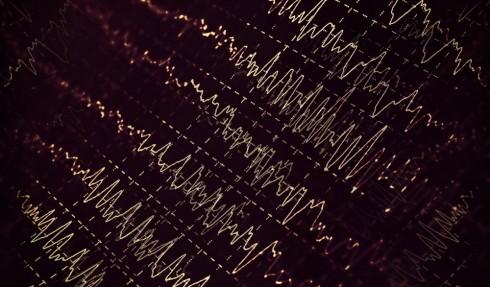Listening to the ‘music’ of brain seizures could help epilepsy patients
New research is turning brain waves into music.
It’s one of those ideas that seems so obvious once you hear it: Why not study brain activity by listening to it, rather than just looking at it?
As so often happens in science, two researchers from Stanford University stumbled upon this idea while exploring something slightly different.
It started when Josef Parvizi, associate professor of neurology at Stanford University Medical Center, heard a fascinating piece of music played by the Kronos Quartet. The group was playing a piece based on radio signals from space, and Parvizi was amazed at the incredible sounds and the spectacular photos of the universe that accompanied the music.
“They say we have a universe between our ears,” Parvizi says. “In our brain, a universe is hidden. So I thought, ‘Why don't we try something like this?’ Because I know for a fact that the brain works with electricity.’”
Parvizi set out to find someone to convert electrical signals from the brain into something audible — and that’s how he found Chris Chafe. Chafe is a composer, and the director of the Center for Computer Research in Music and Acoustics at Stanford University.
At first, the collaboration was purely artistic. Parvizi and Chafe wanted to experiment with musicalizing the electrical activity of the brain. Very quickly, however, the pair realized they had something entirely different on their hands. When they listened to the music generated by the brain activity of an epilepsy patient, they could clearly distinguish seizure activity in the brain from non-seizure activity.
Out of this discovery came the idea for a simple device the researchers call the "brain stethoscope" — a tool to allow caregivers for epilepsy patients to listen to a patient's brain waves and quickly know if an undetected seizure may be occurring.
“My job is to treat patients with intractable epilepsy,” says Parvizi. “On a daily basis I review EEG’s, or electroencephalograms, so I have lots of recordings. If somebody goes into seizure, the electrical waves generated inside the brain become very high amplitude, very rhythmic. Now we are able to record them with this simple device and transmit [the signals] into a computer. That's where Chris's algorithm comes in very handy. He does his magic, and turns those electrical waves into these beautiful sounds.”
Chafe processes the brain signals through a computer music system. He uses a digital sample of a human voice as the basis for a tone that the brain's electrical waves will act upon. Any “perturbation” or deflection in the brain waves creates a counterpart in the audio waves, modulating the sound of the tone by changing its rhythm, pitch and inflection in ways that are clearly audible and often quite dramatic.
“When I tapped into some of the data that was provided from Parvizi’s lab I was hearing rhythms that are astonishingly intricate,” Chafe says. “Pursuing this on a musical level has been really exciting.”
From a medical perspective, Parvizi says, the “rhythmicity” in brain activity is not good. This “rhythmic, explosive activity” shuts down brain function during a seizure. Now, using the brain stethoscope and Chafe’s musicalizations, doctors and patients can hear exactly when this is occurring, even if the patient herself is unaware she is having a seizure.
“We are kind of tuning in to our psyche in a qualified way, rather than a quantified, visual way,” Parvizi explains. “We are trying a ‘hearing’ versus a ‘seeing’ pathway into what's going on in the brain. The device is going to be helpful to my patients because they can actually use it themselves at home.”
Unfortunately, the researchers are not quite at that stage yet. Right now, Parvizi says, they are still recording electro-physiological activity using glued electrodes, and that takes time, energy and resources. Eventually, however, Parvizi hopes the device is going to be something a patient or a doctor can carry in her pocket.
“I hope it's going to be a device that will help us understand what the so-called music of the brain is like,” he says. “That's going to open the way for understanding our thoughts and communicating through this type of media, rather than quantified waveforms.”
Parvizi says this may just be the beginning. First and foremost, he wants his patients and their caregivers to be helped by this device, but he has ideas beyond that.
“This is going to take us to a different arena, in which we can actually have a new modality of communication for thoughts and emotions,” he says. “So there might be a device that's going to ‘read’ your brain tone, and that might mean that one day we will be able to understand what that tone means.”
This story is based on an interview by our partner Science Friday, a weekly radio show and website covering science, technology and other cool stuff.
Our coverage reaches millions each week, but only a small fraction of listeners contribute to sustain our program. We still need 224 more people to donate $100 or $10/monthly to unlock our $67,000 match. Will you help us get there today?
